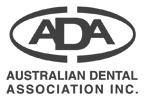Surgical Removal of Teeth Jaw & Mouth Surgery
Lorem ipsum dolor.
Rest
Rest is important to your speedy recovery. Relax at home for the first couple of days. Even if you feel capable of doing more it is advisable to avoid heavy lifting, or physical exertion and this can lead to bleeding. Contact sports are not advisable and you should ask your surgeon in regards to clearance to play. Try to keep your head elevated to help reducing swelling.
Oral Hygiene
Do not rinse your mouth vigorously the day of the procedure. Gentle toothbrushing can be performed once the local anaesthetic has worn off. Try to use a small, child-size toothbrush if necessary to clean your teeth after meals. Rinse with an alcohol-free chlorhexidine mouth rinse such as Savacol Alcohol-Free at least four times per day and preferably after meals.
Food, Alcohol and Smoking
The first meal following your procedure should be cool fluids. You may then be able to progress to soft foods and from this point it will be a slow progression back to a normal diet. Initially you may have limited mouth opening and difficulty eating tough foods. This usually resolves within two weeks following the procedure.
Things to avoid initially:
- Hot foods and drink
- Carbonated drinks
- Food with small hard particles such as seeds
- Smoking
- Alcohol
Swelling
Swelling usually occurs after wisdom tooth removal and will increase over the first two days. It may take approximately one week for this to resolve. It is important to apply ice packs to minimise swelling. These are best wrapped in a thin cloth to avoid direct skin contact and applied in 20 minute intervals over the first day.
Stitches
If you had stitches placed during your procedure, they will dissolve over the next 10 – 14 days. Rarely do we need to use stitches that do not dissolve. We will let you know if we have used these stitches so that we can arrange a time to remove them in the clinic
Pain Control and Medications
The local anaesthetic utilized during your procedure will last for 6 – 12 hours. You should however begin taking regular pain control medication before the anaesthetic has worn off and once you are able to drink.
Ibuprofen medications (eg Nurofen, Brufen, Actiprofen, Heron Blue) are good anti-inflammatory pain killers that should be taken regularly for the first week. Follow the instructions on the medication. It is best to have this medication with food or milk. If you have problems with stomach ulcers, reflux or asthma, you should check with your surgeon, doctor or pharmacist prior its use.
Paracetamol with or without codeine (eg Panadol, Panadeine) can be taken in conjunction with ibuprofen. You may be given a script for stronger pain killers. It is important not to take more than total of 8 tablets containing 500mg of paracetamol whether or not they contain codeine. After the first two or three days try to reduce the amount of codeine containing medications and replace them with plain paracetamol. Codeine can sometimes cause nausea and vomiting. If this occurs stop taking medications containing codeine.
You may be prescribed antibiotics which should be taken as directed.
Bleeding
It is normal to have some staining of the saliva with blood as part of the procedure. A small amount of blood can seem like a large quantity. Try to wipe away or swallow saliva rather than spitting as this can disturb the clotting process and lead to ongoing bleeding.
If you have heavy bleeding or are spitting out large clots of blood:
- Gently wipe any blood from the mouth with a damp gauze swab
- Place a fresh swab over the bleeding tooth socket and apply pressure for 20-30 minutes either by closing firmly onto the gauze or by direct finger pressure
- Sit upright
- Apply an ice pack to the side of the face
If you cannot control the bleeding please call for advice.
Follow-up Appointment
You will be contacted the day or so following your procedure to ensure all is well. At this time, a review appointment will be arranged.
Please call if you have any concerns prior to your review appointment.
You should call if:
- Increasing facial swelling after 2-3 days
- Increasing pain after 3-4 days
- Fevers
- Ongoing nausea or vomiting
Emergencies
In the event of an emergency please contact the Queensland Ambulance Service or present to your local hospital emergency department.
Our Associations





Quick Links
Website by Bearded Friend
